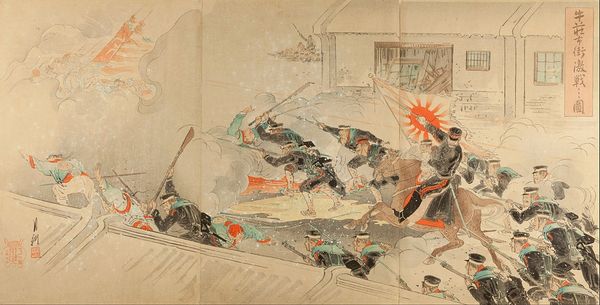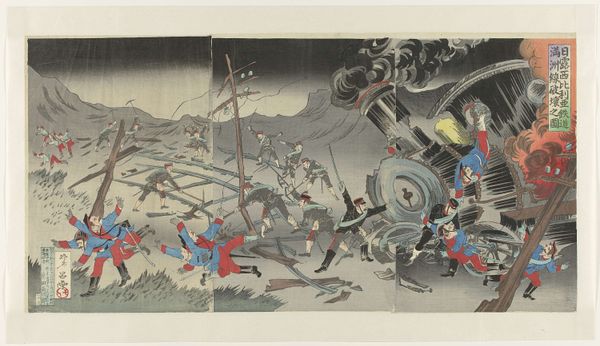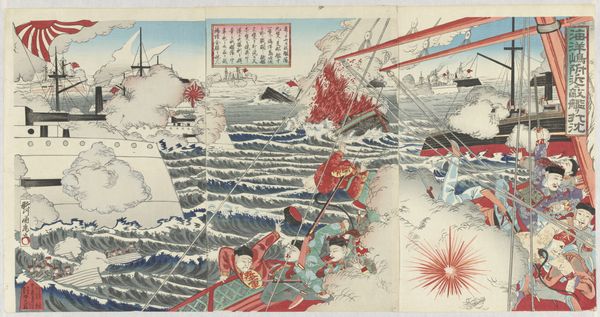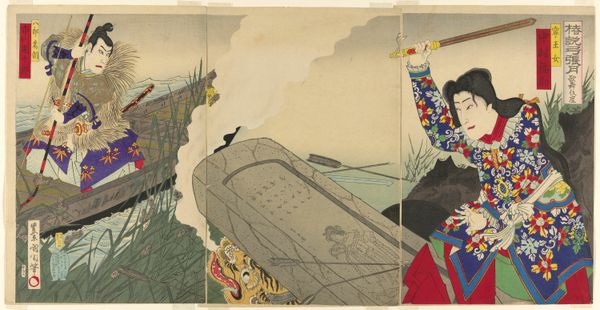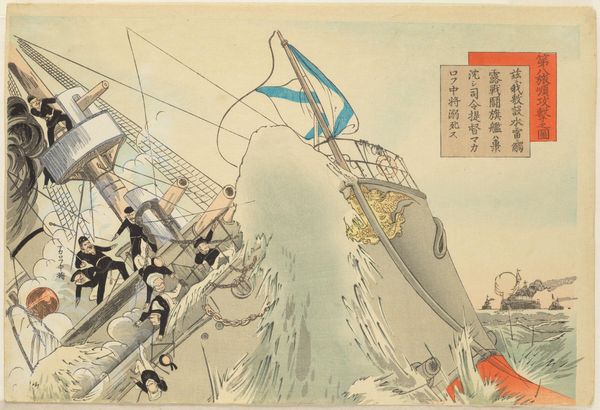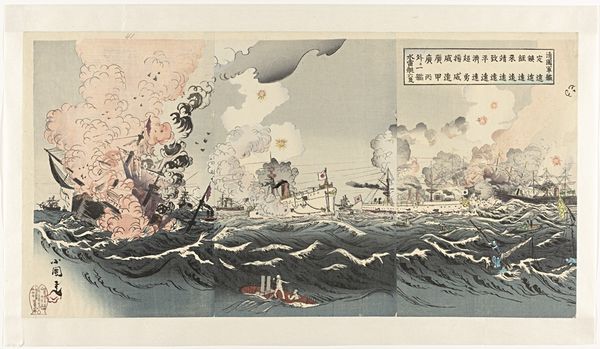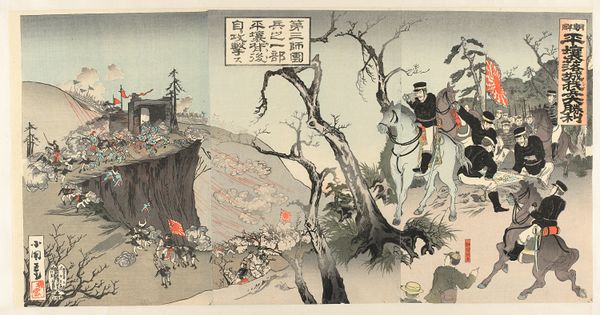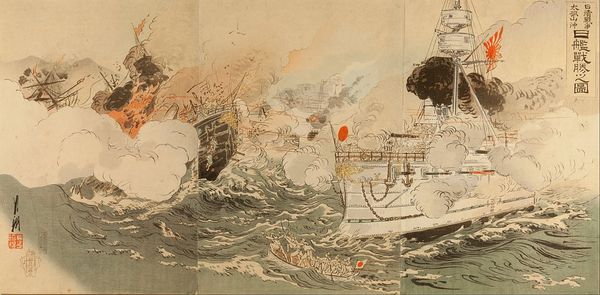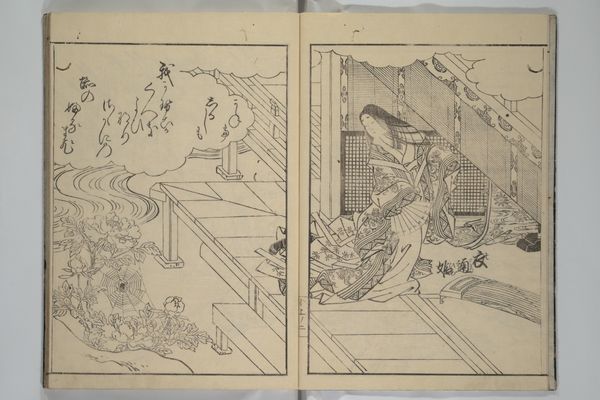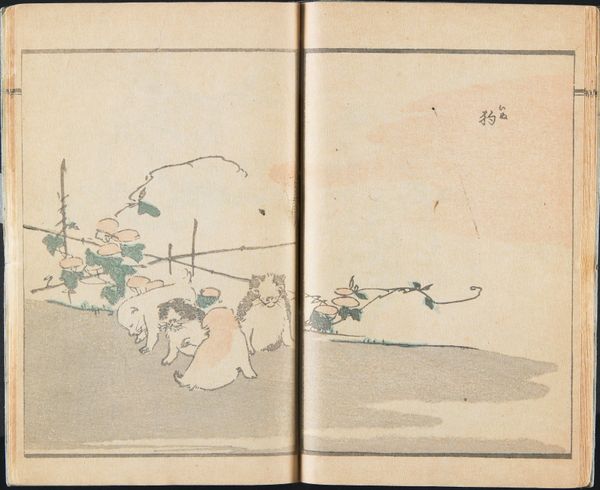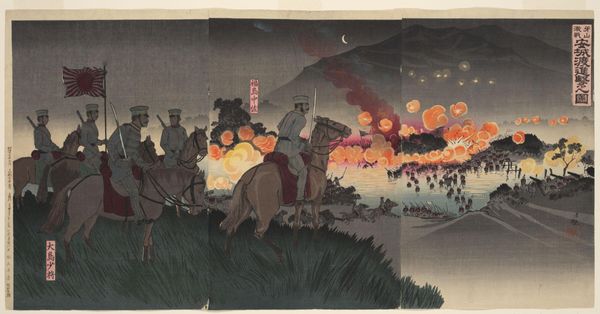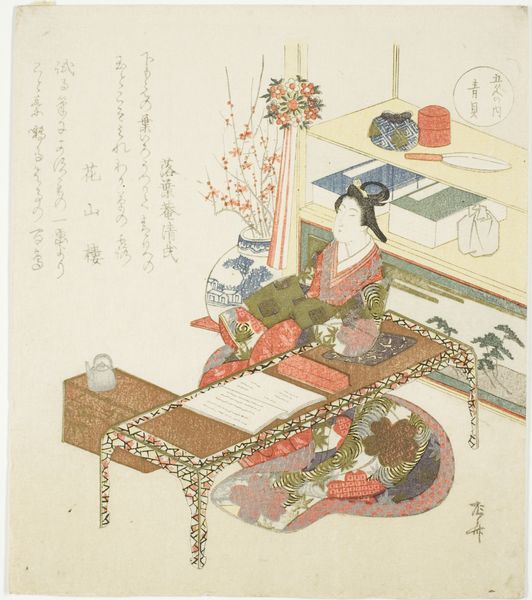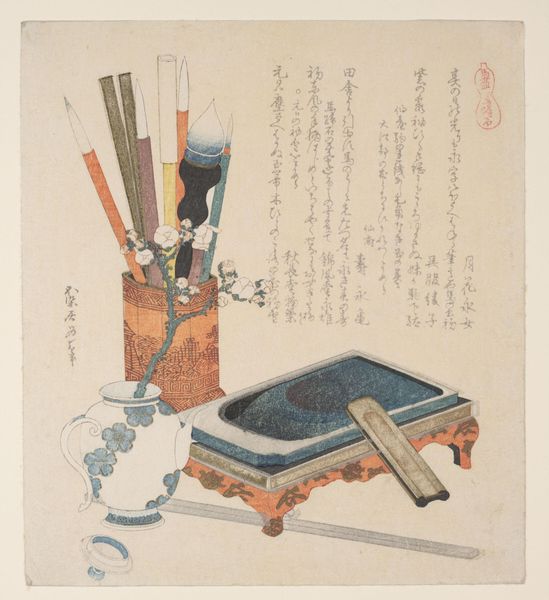
The Occupation of the Battery at Port Arthur (Ryojunko hodai nottori no zu) 1895
0:00
0:00
Copyright: Public Domain
Editor: This woodblock print, "The Occupation of the Battery at Port Arthur" by Ogata Gekko, created in 1895, really throws you right into the chaos of battle. The composition, filled with smoke and frantic figures, is immediately striking. What story do you think the symbols and imagery are telling? Curator: Look at how the artist uses smoke – not just as visual texture but as a veil, obscuring and revealing elements of the battle. What emotional impact does this layering have on you? Consider, too, the cannons, the figures clambering upwards. In the iconography of warfare, upward movement often signifies ambition, aggression, even a kind of desperate hope. Is it there anything recognizable here that ties to Japanese war traditions? Editor: That makes me think about the cultural memory being invoked. I see the aggressive movement, and I can tell that there are specific traditional attires represented on some of the characters, and how these visual choices reinforce a sense of Japanese cultural identity even amidst a scene of conflict. Curator: Precisely! The print immortalizes the siege while it shapes a memory of bravery, all packaged in recognizable traditional patterns. Even the landscape itself, while rendered naturalistically, reinforces the Japanese narrative. Notice how it cradles the figures, framing their actions within a distinctly Japanese visual and psychological space. How might contemporary audiences interpret this relationship between man, landscape, and memory? Editor: That's fascinating. So it is more than just showing a moment of history. It's constructing and reinforcing the idea of Japan through symbolic action? Curator: Exactly. These choices speak to the artist's agenda to perpetuate a specific cultural memory. Consider how the memory and heroic representations play out in other Ukiyo-e. Editor: I hadn't considered the deeper layers of cultural encoding embedded within what I initially saw as a dramatic scene. Now it has unveiled how images actively participate in creating national narratives. Curator: Indeed. Recognizing these layered symbols allows us to read images as potent carriers of history and cultural identity.
Comments
No comments
Be the first to comment and join the conversation on the ultimate creative platform.
